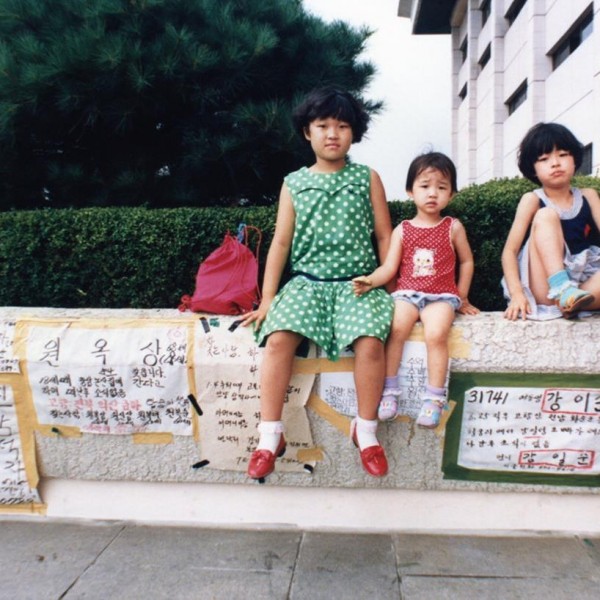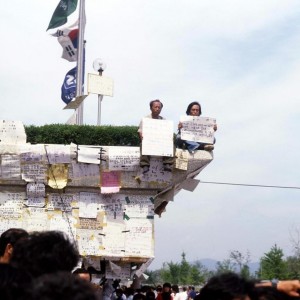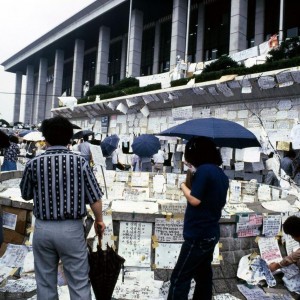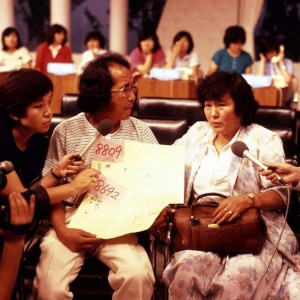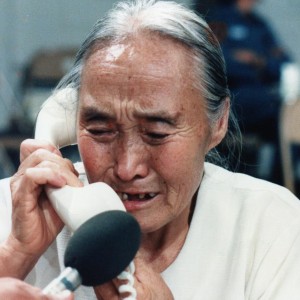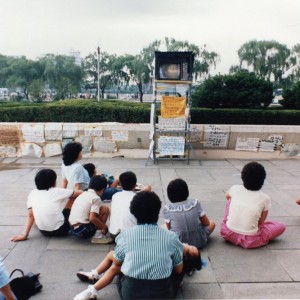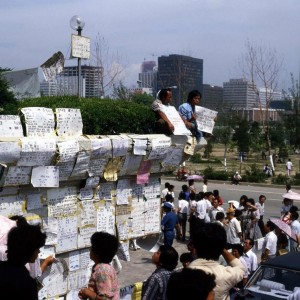The KBS Special Live Broadcast “Finding Dispersed Families” was aired daily on channel KBS 1.“Finding Dispersed Families” raised widespread recognition in Korea aThe KBS Special Live Broadcast “Finding Dispersed Families” was aired daily on channel KBS 1.“Finding Dispersed Families” raised widespread recognition in Korea and around the world of the deep scars that the Cold War had left on individuals.
Reunions of long lost relatives helped assuage the pain of decades-long separation.(the historic first SouthNorth family reunions took place in September 1985.)It ease tension between South and North Korea and helped to overcome the international Cold War regime.They also make a compelling argument for peace; never again allow such tragedy.
For its humanitarian contribution, the KBS Special Live Broadcast was highly acclaimed around the world.It was named the “most humanitarian program of 1983” by journalists at the 6th World Media Conference held on September 510 that year in Cartagena, Colombia. At the 24th Gold Mercury International Peace and Cooperation Summit held on February 17, 1984, in Gabon, Africa, KBS became the first broadcasting organization to win the Gold Mercury International Ad Honorem award.

“Finding Dispersed Families” was aired daily.

The history of dispersed families
history of dispersed families goes back to the period of Japanese colonial rule (19101945). In search of freedom, many Koreans took refuge in Manchuria, Russia and other places, and under Stalin some of them were forcibly relocated to Sakhalin and Tashkent. Moreover, some young people were dragged off to work in the mines or to join the Pacific War. After Korea’s liberation from Japan, the country was divided suddenly into South and North along the 38th parallel and not long after the Korean War broke out on June 25, 1950. Consequently, families living in the South and North were torn apart. The Korean War resulted in four million casualties and 100,000 war orphans; ten million people were separated from their families.
The KBS Special Live Broadcast “Finding Dispersed Families” went on air around the 33rd anniversary of the outbreak of the Korean War and the 30th anniversary of the ceasefire that ended the fighting.
THE ARCHIVES OF “FINDING DISPERSED FAMILIES”
The Archives of the KBS Special Live Broadcast “Finding Dispersed Families” comprises 20,522 records of live broadcasts by the Korean Broadcasting System of reunions of war-dispersed families from June 30 through November 14, 1983. It holds 463 videotapes of 453 hours and 45 minutes of broadcasts, producers’ journals, applications to participate, broadcast ephemera, audiotapes, and photographs.
Applicants for reunion
Records of live broadcasts
Participants that aired
Families united
WHY? MEMORY OF THE WORLD
The KBS Special Live Broadcast “Finding Dispersed Families” was aired daily on channel KBS 1, beginning at 10:15 p.m. on June 30 and ending at 4 a.m. on November 14, 1983, marking a total of 453 hours and 45 minutes of live broadcasting over 138 days. The whole live broadcast was recorded. The 463 tapes of the original recordings, and other materials generated in the course of broadcasting such as the posters carrying participants’ capsule stories, cue sheets, programming schedules, radio recording materials, and photos are all authentic originals that have been preserved in the KBS archives. Most of the records generated by the central government and local autonomous bodies have been preserved in the National Archives of Korea.
TV shows the tragedy of war and national division to the world
The Archives of the KBS Special Live Broadcast “Finding Dispersed Families” are vivid records that show the world the wretchedness wrought by war and inspire respect for human rights and love for humanity. The world watched as hordes of people looking for lost family members crowded Yeouido Plaza and the areas around KBS headquarters. The then U.N. Secretary General Javier Perez de Cuellar expressed deep sympathy and understanding of the tragedy of dispersed families when he met with the Korean Ambassador to the United Nations Kim Kyung-won on July 21, 1983. During the 70th assembly of the Inter-Parliamentary Union held in Seoul, 17 members from 7 countries visited the KBS broadcast site, along with the directors of the International Human Rights Commission. At the general assembly of the Asia-Pacific Broadcasting Union held in October 1983 in Auckland, New Zealand, there was a screening of a 30-minute English-language documentary on the subject of dispersed families. Stationed at the press center set up in the central hall at KBS headquarters, journalists from 25 countries reported on the family reunions in real time, and the news was broadcast on ABC’s “Nightline” program in the United States.
For its humanitarian contribution, the KBS Special Live Broadcast “Finding Dispersed Families” was highly acclaimed around the world. It was named the “most humanitarian program of 1983” by journalists at the 6th World Media Conference held on September 5?10 that year in Cartagena, Colombia. At the 24th Gold Mercury International Peace and Cooperation Summit held on February 17, 1984, in Gabon, Africa, KBS became the first broadcasting organization to win the Gold Mercury International Ad Honorem award. The award, generally granted to individuals or organizations that have made a contribution to world peace, was won by KBS in recognition of the achievement of the special broadcast “Finding Dispersed Families” in reporting on the scars of war and raising awareness of the importance of human rights and peace not only in Korea but all over the world. The program has also been used as a course material for broadcasting majors at the University of Greenwich in London. Although there are many cases of war and separation of families around the world, in no other instance has the sorrow and longing of those war-dispersed people been so vividly expressed through a TV program.
TV contributes to ending the Cold War and easing tension
The KBS Special Live Broadcast “Finding Dispersed Families” raised widespread recognition in Korea and around the world of the deep scars that the Cold War had left on individuals. It also served to make the issue of dispersed families in South and North Korea an international issue. At the time, Yoo Chang-sun, president of the South Korean Red Cross, released a statement (July 1983) that “resolution of?the issue of ten million dispersed family members should no longer be delayed,” urging that “the South?North Red Cross talks should be quickly resumed.” In his Liberation Day commemorative speech (August 1983), the then President Chun Doo-hwan emphasized that “Although the South and North have different ideologies and systems, resolution of the issue of dispersed families can no longer be delayed.” U.S. President Ronald Reagan, in his address to the Korean National Assembly (November 1983), mentioned the success of the KBS broadcast and urged North Korea to cooperate.
As a result of these endeavors, two years after the “Finding Dispersed Families” broadcast, a North Korean delegation visited KBS (May 1985) and the historic first South?North family reunions took place in September 1985. As of 2014, a total of 18,523 people have been reunited with their families across the border. Seven years after the broadcast, South Korea established diplomatic relations with the Soviet Union (September 1990), which had been a major player in the Korean War and leader of the Communist bloc. In 1991, a year later, the Soviet Union was dissolved, bringing the Cold War to a close. In this way, the KBS live broadcast “Finding Dispersed Families” helped to overcome the international Cold War regime and ease tension between South and North Korea.
TV draws national participation and empathy
“Finding Dispersed Families” attracted the participation of people from all walks of life and aroused empathy across society. By giving direct access to broadcasting to the public, who had heretofore been passive television viewers, KBS succeeded in attracting more than 100,000 participants in the program. The number of applications submitted by phone reached more than 60,000 per day. The program was an epochal event, rarely found in world broadcasting history. As the whole nation watched the family reunions of ordinary people on TV, they cried along with the separated family members and shuddered over the wounds of war that had not yet been healed. From October 10 to 20, 1983, Gallup Korea carried out a random survey of 1,450 households across the country, of which 53.9 percent said they watched the live broadcast till 1 a.m.; 88.8 percent reported they shed tears while watching the program. From the third day of broadcasting, volunteers ranging from?students and housewives to other ordinary citizens served as guides, provided medical assistance, and filled out forms for applicants; from individuals and businesses, generous support poured in for the event, providing goods and facilities such as color televisions, public phones, portable toilets, rail tickets, bottled water, bread, instant noodles, fans,?and towels. People taking part in the program were given special time off work.
1) Time
After World War II (1939?1945) the world came under a new form of conflict, the Cold War. At the frontline of this war, the Korean War broke out on June 25, 1950, killing more than two million people and resulting in millions of Koreans orphaned and separated from their families. In 1983, thirty years after the ceasefire, the Cold War still raged as ferociously as ever. In September 1983, the Soviet Union shot down a Korean Air passenger plane as it flew over the Pacific Ocean, killing all 269 on board. Then in October, North Korea carried out a bomb attack targeting the president of South Korea during a state visit in Rangoon, killing 21 South Korean officials and injuring 40. The Cold War had not ended on the Korean Peninsula.
It was in June of the same year that 100,000 people crowded the plaza in front of KBS in Yeouido, Seoul, ardently hoping for a reunion with lost relatives. And as they watched the reunions on TV, the whole nation wept with sorrow.
The KBS Special Live Broadcast “Finding Dispersed Families” was a symbol of the movement for peace to overcome the Cold War regime, informing the world about the wretchedness wrought by war and calling for peace.
2) Place
The Archives of the KBS Special Live Broadcast “Finding Dispersed Families” are a documentary heritage that informs the world of the wretched legacy of war on the Korean Peninsula, the frontline of the Cold War and the only divided nation left on earth; it was also an epic effort to heal wounds of the divided Korean people.
From the morning after the first broadcast on June 30, 1983, the area around KBS in Yeouido was crowded with people from dispersed families waiting to submit applications to appear on the program. Posters put up by people seeking lost relatives covered not only the main building of KBS but also the footpaths, Yeouido Plaza, and the trees by the roadside. It was an unforgettable sight. Participation in the broadcast proceeded in the following order: filling in application form → submitting application (application number issued) → appearance on television. The application form asked for the applicants’ details such as name, age, sex, hometown, present address, details on the person being sought, relationship with that person, place and time of separation, any distinguishing physical features, and any other information that might prove useful. KBS staff helped those who had difficulties writing their application form. Because of the limitations of live broadcasting, a flood of calls were received requesting to see parts of the program again. In response, KBS installed 24 TV sets in the open studio and on the rooftop of its building and played videotapes of the broadcast.The central hall in the KBS main building teemed with people ? those applying to appear on the program, those waiting for news and a possible reunion after appearing on the program, and journalists from 25 countries. Live broadcasting was carried out from the open studio (TS-1) in the main hall. This studio was the main stage for the event, where history was made, the place where people from dispersed families waited anxiously as KBS employees just as anxiously tried to find lost family members for them, and where tearful reunions took place.
3) People
The Archives of the KBS Special Live Broadcast “Finding Dispersed Families” are records of ordinary Koreans, people who had been unable to find lost relatives on their own and had resigned themselves to living with the loss. They are the stories of people who had lived through history though they may not be recorded in it. There was a woman who fainted the moment she heard the voice of her older brother she had been separated from for 42 years. There were some driven to suicide by the thought of the families they had left behind in North Korea. One man, overjoyed at the reunion with his elder sister, suddenly shouted “Hurrah for KBS! Hurrah for public broadcasting!” A brother and sister who had not even known whether each was alive or dead exclaimed and burst into tears when they recognized each other through the exchange of a few words at the registration counter, before they even appeared on television. People thought up all sorts of ingenious ways to attract attention to their own particular stories. The person who stood up with a mannequin, the person who brought along a goat, the person who wore a gold crown, the person who dressed as a scarecrow, the person who played the accordion, the people who wrote their stories on an ET doll, or a car, or a motorcycle ? all were trying hard to draw notice to themselves. Most of the people appearing on the program were ordinary working- and middle-class Koreans. Unlike upper-class countrymen who had been searching for lost family members on their own, using their own resources and varied means of communication including phone calls and newspaper advertisements, the people who surged to KBS did not have the resources to search for lost relatives without help.
With its unprecedented 138-day broadcast, KBS enabled people to directly participate in public media and deliver their own messages. This documentary heritage is significant as an audiovisual record of ordinary people appearing on television of their own accord and telling their stories in their own words, how they had involuntarily been separated from their families through war and their nation’s division.
4) Subject and Theme
“The Pain of War and Division, and Healing Wounds”
This documentary heritage informs the world of the pain and misery suffered by the ten million Koreans from dispersed families as they lived through the Korean War and national division. It is a compelling record of beginning the process of healing and recovery from the wounds of war through reunion with family members after more than 30 years of separation.
“Human Rights and Humanitarianism”
The scenes of families hugging and weeping in each other’s arms after meeting for the first time in over 30 years made plain the strength of family bonds and love. Scenes showing the sorrow of those who were unable to meet, hemmed in by opposing political systems and ideologies, are records of universal human love longing to reach out. The reunion of dispersed families is an issue that should transcend politics and military affairs.
“Peace and Unification”
“Finding Dispersed Families” made it clear that the issue of dispersed families is not confined to South Korea but one that must be tackled by both South and North Korea through unification. It also delivered a message of peace to the whole world, a reminder to all that such a tragedy should never be allowed to happen again.
5) Form and Style
The KBS Special Live Broadcast “Finding Dispersed Families” is a unique and groundbreaking use of television for humanitarian engagement with the task of finding loved ones for people torn by war from home and roots. The vividness and rich expressiveness of color TV, which was just becoming widespread in Korea at the time, magnified the effect of the campaign. In some cases, even without knowing the name or appearance of the lost relatives, people were able to recognize relatives just from seeing each other on TV. After this broadcast, many TV programs with people-finding themes and format began to appear?and continue to this day. In addition, the computer search service launched at the same time as the live broadcast proved to be a successful attempt in merging broadcasting with information technology. Linking KBS with the computers of the Korea Advanced Institute of Science and Technology (KAIST) and the National Police Agency to enable cross-search operations, the campaign to find dispersed families deployed the tools of science and increased the family reunion success rate.
As a television history maker, “Finding Dispersed Families” was a marathon broadcast (or telethon) on air for 138 days on a single theme. The work was carried out by 1,641 production staff and some 5,000 employees directly or indirectly involved across the network linking Seoul headquarters with 21 regional offices and relay stations.
6) Social/Spiritual/Community Significance
Records related to the broadcast campaign to find dispersed families are valuable materials that remind us of the pain of war and national division and can be used to make future generations aware of the importance of peaceful unification of South and North Korea. More than 30 years have now passed since the KBS Special Live Broadcast “Finding Dispersed Families” went to air. The Korean Peninsula, however, remains divided and dispersed families in the South and North are growing older as they yearn to see each other. The search for dispersed families still continues. The tragedy of families separated in this way must be remembered not only by Koreans but by the whole world. The broadcast is a pain-filled record that must be carefully preserved as humankind aspires to achieve peace for all.
Rarity
The historical significance of the Archives of the KBS Special Live Broadcast “Finding Dispersed Families” is found in the fact that they are records of a program with public participation and access of the largest scale since the appearance of television. It was a long-term campaign with few precedents in the world’s history of broadcasting. Many countries have experienced war and division but no other TV program has expressed with such heartbreaking intimate immediacy the pain and wounds left by war on individuals and nation alike. This documentary heritage is the only existing copy, of which KBS has exclusive copyright, an arrangement that makes external copying of the material impossible. The names and details of 100,952 people who applied for family reunions have been compiled into seven volumes. In addition, a collection of the original application forms to appear on the program and signboards telling the applicants’ stories written in their own hand have all been preserved.
Integrity
The Archives of the KBS Special Live Broadcast “Finding Dispersed Families” are preserved almost wholly intact. The originals of 463 video tape recordings of the program, some 15,000 photos, application forms to appear on the program, and individual stories written by hand, a ledger?of applications received, TV programming schedules, sheets showing division of duties, work schedules, and working journals of the production staff have all been preserved. Other documents relating to approval for expenditures on supplies and meals for the production staff, and distribution of lists of names of dispersed family members have been preserved in digital form. In addition, the posters containing individual stories that were plastered all over the broadcasting studio, the area around KBS, Yeouido Plaza, and the designated reunion area, photos of the banners, the title song for the special live broadcast, and music albums on the theme of dispersed families have all been preserved in their original or digital form.



